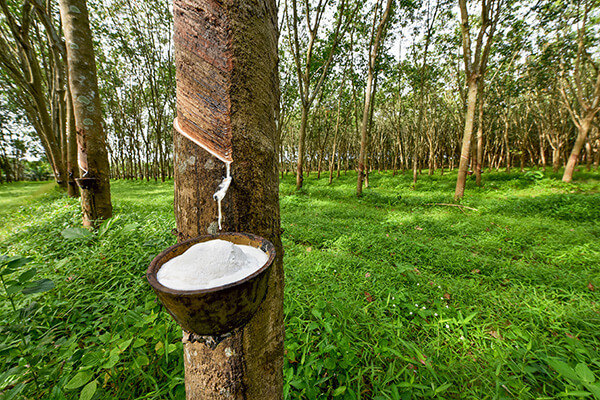Accessories are a great way to introduce consumers to this buoyantly supportive component

As the quest for better sleep leads an increasing number of consumers to invest in better bedding, latex producers are preparing for a new wave of growth. To meet demand, companies are creating new formulations and constructions with enhanced features, such as advanced zoning and performance additives. At the same time, they are broadening their lineups to include more accessories that provide a nice introduction to the category for consumers. In addition, many producers have initiated or strengthened participation in certification programs that document their efforts to source the latex for their products in a sustainable, responsible manner.
In this primer for mattress retail sales associates and customer service representatives, we look at the use of latex in bedding and trends in the category.
Using this is a CliffsNotes primer, you can get up to speed on latex in just a few minutes. For a more in-depth look, read Gary James’ report, “The Lowdown on Latex,” in our sister publication BedTimes at BedTimesMagazine.com/2019/10/The-Lowdown-on-Latex.
Benefits of latex: Latex is known for its supportive buoyancy and durability. It’s also breathable, with inherent anti-dust mite and anti-microbial properties. Latex is used in mattress cores, comfort and quilting layers, as well as in toppers and pillows.
Types of latex: There are three main types of latex used in bedding components: 100% natural latex, synthetic latex or blended latex (a mix of natural and synthetic types). Natural latex is typically the priciest.
Production: Traditionally, latex has been manufactured into bedding components using either a Talalay or Dunlop process, with the Talalay process generally creating softer, more consistent (and more expensive) latex components and Dunlop creating denser (and less expensive) latex components. But innovations are allowing suppliers to manipulate both processes to create latex with a broader range of properties. For instance, Latexco NV uses a SonoCore vulcanization process, which employs radio frequency technology and dielectric heating to vulcanize latex from the inside out, instead of the conventional steam heating and drying used in Dunlop-process latex. The SonoCore process uses less energy overall, and the result is a more durable, consistent and homogenous latex, according to the company.
Downsides: Latex typically is heavier and more expensive than polyurethane foams and innersprings.
A starting place: With much lower price points than mattresses, pillows and toppers are a great way to introduce consumers to latex. Once they appreciate the component, they may be more interested in trying — and even buying — a latex mattress. Shredded latex is used as a pillow core, usually surrounded by down or fiber. Latex also can be poured into a variety of pillow molds, making it ideal for specially shaped pillows like lumbar pillows, neck pillows and travel bolsters. Retail sales associates should include a latex option in every pillow presentation.
Other latex trends
Add-ons are in: Like suppliers of polyurethane foams, latex suppliers are incorporating more additives and coatings into their products. These include copper, graphite, charcoal and other materials with cooling, anti-microbial, moisture-absorbing and other properties, as well as fragrances such as cinnamon that add a fresh scent.
Taking on new roles: Latex layers are included in many hybrid mattresses, and some suppliers are finding new ways to pair latex with other components. For instance, Latexco NV’s Soul Spring is a molded 100% latex encasement that can hold a pocketed steel spring unit, which the company says makes a smooth, comfortable sleep surface.
Sustainability stories: Made from the secretions of rubber tree plants, one of natural latex’s biggest selling points is the fact that it is a renewable resource. Shoppers interested in the environmental and health benefits of latex favor 100% natural versions, suppliers say. In addition, many latex suppliers are reducing their overall environmental footprint by making changes, such as reducing the use of fossil fuels in their factories and cutting back on the fertilizers and pesticides used in their plantations.
They’re certifiable: Many latex suppliers have sought certifications for their products. Certifications, such as those from the Cradle to Cradle Products Innovation Institute, the Forest Stewardship Council, Oeko-Tex and the Rainforest Alliance, can appeal to data-driven shoppers seeking proof of a product’s sourcing, quality, social responsibility, and environmental and manufacturing standards.
New forms and functions: Suppliers are experimenting with new shapes for latex components. For instance, Lien A makes a latex “noodle” that can be chopped up and mixed with other fibers for a pillow fill. And last year, Talalay Global introduced Talalay Echo, which incorporates bits of latex left over from trimming mattress cores. The company pulverizes these into a fine powder and combines it with liquid latex to create comfort layers that are less expensive than traditional Talalay latex.

